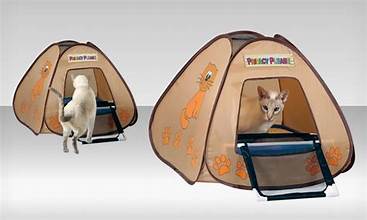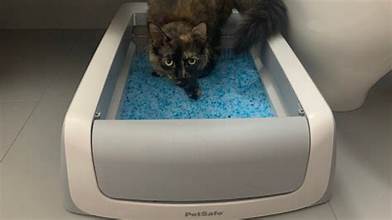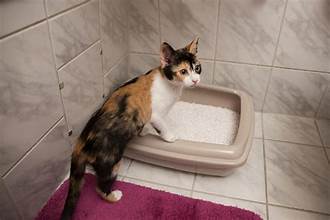A clean, well-placed, and adequately maintained litter box can make a difference for you and your cat. Whether you’re a new cat owner or an experienced one, understanding the ins and outs of litter box care can prevent common issues like odor, mess, and stress for your cat. Here’s a guide covering litter box placement, types of litter, and tips to keep things fresh and stress-free for everyone.
1. Finding the Perfect Spot: Litter Box Placement Tips
The correct placement can make the difference in whether your cat feels comfortable using the litter box consistently:
Choose a Quiet, Private Area:
Cats prefer a quiet spot where they can feel safe and undisturbed. Avoid putting the litter box in high-traffic areas or near noisy appliances.

Avoid Confining Spaces:
While some owners think a closet or small bathroom is ideal, ensure enough space around the litter box so your cat doesn’t feel trapped.
Accessibility is key.
Separate from Feeding Areas:
Cats dislike eating near their litter box, so keep the litter box far from their food and water bowls to maintain a hygienic environment.
Consider Multiple Boxes:
If you have multiple cats, the general rule is one litter box per cat plus one extra. It can help reduce territorial issues and avoid crowding, especially if one cat is more dominant.
Pro Tip:
If your cat is older or has limited mobility, ensure the box is in an easy-to-access location with low sides for easy entry.
2. Types of Litter: Choosing What’s Best for Your Cat
There are many types of cat litter on the market now, and picking the right one can be hard. Here are some options and their pros and cons:
Clumping Clay Litter:
It is one of the most popular choices for its easy cleaning and effective odor control. Clumping litter lets you scoop out waste easily, leaving the rest fresh. However, it can be dusty, which may bother some cats.
Silica Gel Crystals:
Silica litter is known for superior odor control and low dust. It’s absorbent and lasts longer between changes. The downside is that it costs more than other types, and some cats may not like the texture.
Natural or Biodegradable Litter:
Wood, corn, wheat, or recycled paper are eco-friendly and generally lower in dust. These types may be preferable for cats or owners with dust sensitivities. However, they may not control odors or other options.
Non-Clumping Clay Litter:
Non-clumping litter is inexpensive but requires more frequent changes since it doesn’t isolate waste as clumping litter does. This type can sometimes be messier and may retain odors faster.
Pro Tip:
If you’re switching litter types, start with a small amount of the new type; cats can be sensitive to changes in texture and scent. Mix it with the old litter gradually to help them adjust.
3. Maintaining Litter Box Cleanliness:
Daily and Weekly Routines
A clean litter box is essential for your cat’s health and happiness. Establish a routine for scooping and cleaning to keep the box odor-free and inviting:
Daily Scooping:
Scoop out waste at least once a day. Clumping litter makes this easy by isolating urine and solid waste. Consistent scooping keeps the box clean and reduces odors.
Full Litter Change:
A complete litter change every 2–3 weeks is usually sufficient for clumping litter, but non-clumping litter may need to be changed weekly. Dispose of the litter and wash the box with mild soap and water.

Deep Clean:
Once a month, completely clean the litter box. After washing it, rinse thoroughly to remove any lingering scents. Avoid harsh cleaning products like bleach, which can deter cats from using the box.
Layer Fresh Litter:
After cleaning, refill the box with a sufficient layer of fresh litter. Typically, 2–3 inches of litter provides enough depth for digging and covering.
Pro Tip:
Consider using litter box liners or mats around the box to reduce litter’s tracking outside the box area.
4. Managing Litter Box Odor:
Freshness Tips and Tricks
Odor control is a priority for cat owners, and with a few simple steps, you can minimize unpleasant smells:
Activated Charcoal or Baking Soda:
Putting baking soda at the bottom of the litter box can help absorb odors. Some cat litters have built-in odor control, but you can add a layer of activated charcoal for extra effectiveness.
Ventilation:
Place the litter box in a well-ventilated area to help disperse odors. Keeping windows open or using a small fan can circulate air and reduce lingering smells.
Odor-Neutralizing Products:
Sprays and additives explicitly made for litter boxes help control odors. Ensure any product you use is cat-safe, as some scents or chemicals can be off-putting or harmful to cats.
Air Purifiers:
An air purifier with a carbon filter near the litter box can help control odors in multi-cat households or smaller homes.
Pro Tip:
Try different odor-control methods to see what works best with your cat’s preferred litter. Some cats are sensitive to added scents.
5. Making the Litter Box Stress-Free for Cats
Cats are particular about their litter boxes; stress or discomfort can lead to litter box avoidance. Here are some tips to keep the experience positive for your cat:
Regular Cleaning:
Cats have a keen sense of smell and may avoid a box if it’s dirty or smelly. Daily cleaning and a weekly wash can keep the box appealing.
Provide Options:
Some cats like an open litter box and others may feel more secure in a covered one. Experiment with different box types to find what your cat prefers.
Respect Their Space:
Avoid bothering your cat when they’re using the litter box. Cats appreciate privacy, and interruptions may make them uncomfortable using the box.
Health Checks:
If your cat suddenly avoids the litter box or starts having accidents, it could be a sign of stress, urinary tract infections, or other health issues. If you notice sudden changes, schedule a vet visit.
Pro Tip:
Watch for subtle signs, like scratching outside the box that may indicate dissatisfaction. Adjusting your cat’s behavior can make it happier with its litter box.
Final Thoughts on Litter Box Maintenance
Keeping your cat’s litter box clean, comfortable, and odor-free takes a little time and effort but can make a big difference in their quality of life—and yours! By choosing the right location, experimenting with types of litter, and staying on top of cleaning, you can ensure your cat has a stress-free and inviting bathroom space. Happy cat, happy home!





Pingback: Best Way To Make Your Home Special For Your Cat - Positvley Pets